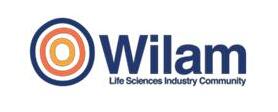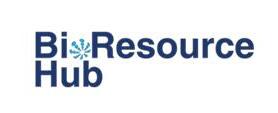
Posted: 15 June 2023
Telix Pharmaceuticals has topped the inaugural Financial Review Fast Global list, with international revenue growth at the Melbourne-based, cancer-fighting biotech soaring off the back of a drug approval in the US.
The Fast Global list, which is presented in association with Quadrant Private Equity, ranks the Australian companies most quickly growing their revenue sourced from offshore.
From $5.2 million of sales outside Australia in 2019-20 and $7.6 million in 2020-21, Telix suddenly shot up to $160 million of offshore sales in 2021-22, representing a 454 per cent compound annual growth rate over the past three financial years – the metric on which the Fast Global list is ranked.
Listed on the ASX with a market capitalisation approaching $4 billion as at June, Telix topped the list ahead of insurance technology conglomerate POP International Holdings, which grew offshore revenue to $12.5 million at a 268 per cent clip over the past three years. Third was Espresso Displays, a maker of portable screens for the work-from-home era, which took in $5 million in 2021-22, a 255 per cent increase on 2019-20.
The massive revenue surge at Telix was not the result of a major acquisition – which would disqualify it under list rules which stipulate the majority of revenue growth must be organic – but of winning approval from the US Food and Drug Administration for Illuccix, its screening tool for prostate cancer.
“Illuccix is changing the lives of about 2000 patients globally every week,” says Christian Behrenbruch, a biomedical engineer who co-founded Telix in 2015.
“You’d be surprised at how many letters we get telling us what our product has meant to them.”
Illuccix represents the first commercialisation of Telix’s core technology that develops molecules capable of carrying a radioactive particle, which can be infused intravenously and spread naturally throughout the body.
At lower dosages of radioactivity, these molecules can then be used to detect cancerous cells and at higher doses can be used to kill them. Another diagnostic product is imminent, this time detecting renal cancer, but Behrenbruch hopes Telix’s therapeutic products capable of destroying cancer are no more than two or three years away.
Telix’s technology has emerged as an alternative to other oncology drugs, which seek to target a particular cancer’s signalling pathway or shut it down biologically. They are also an alternative to standard radiation oncology, which involves patients lying down inside a linear accelerator machine – usually in the basement of a hospital -– and having X-ray beams shot at the known cancerous cells inside them.
“That has been working well for a century, but the main limitation of that approach is you can only treat what you can see or what you can localise, and it causes a fair bit of collateral damage,” Behrenbruch says.
“Our molecularly driven radiation is much more targeted and precise – no matter where in your body you have cancer cells, we’re going to hit them.”
‘Exquisite pictures’
For diagnostic products like Illuccix, its injectable molecules act as a radioactive beacon throughout the body, which under a standard scan from a positron emission tomography machine, will provide what Behrenbruch calls “exquisite pictures” of anywhere a particular cancer’s signature is present.
In the past, many prostate cancer patients have been put on to hormone therapy as a preventative measure, particularly if their levels of prostate-specific antigen are found to be rising after they’ve already had their prostate removed.
“Hormone therapy means you put on a tonne of weight, you have higher risk for all kinds of diseases and you lose your erectile function as well,” Behrenbruch says.
Illuccix, however, allows whatever “speck of disease” that escaped the prostatectomy to be found and dealt with – perhaps with localised radiation therapy – without the need for hormone therapy.
The potential benefits of applying Telix’s technology to renal cancer diagnostics are even more profound. Behrenbruch says 10,000 kidneys are removed unnecessarily every year in the US alone because of a failure to diagnose and stage the treatment of patients correctly.
Despite 80 per cent of Telix’s 300 staff now based outside Australia – most of them at its research hub in Indianapolis – and more than 90 per cent of its revenue also being garnered offshore, Behrenbruch says Telix will remain an Australian-domiciled company.
He cites several reasons for this, including Australia’s research and development tax incentive scheme and the country’s ready supply of the medical isotopes which Telix needs to make its products, thanks to the work of the Australian Nuclear Science and Technology Organisation.
“ANSTO are one of the reasons that molecular radiation took off around 2015 – the supply chain got a lot better, so conducting clinical trials got a whole lot easier,” Behrenbruch says.
Brisbane plant
If not for the pandemic, Telix would have manufactured Illuccix in Australia, however the inability of the FDA to inspect an overseas facility at the time made Indianapolis a more favourable option. However, the renal diagnosis tool, for which Telix has just completed phase 3 trials, will be made in Brisbane.
Apart from the favourable infrastructure, another swing factor for keeping Telix in Australia is its investor community familiarity with molecular radiation. Behrenbruch says early on Telix was far better understood here than in the US, thanks to the precedent set by ASX-listed Sirtex, which attacks liver cancer with tiny radioactive beads called microspheres.
Look out for Telix to remain a fixture of the Fast Global list for some years to come. Already a very rare biotech company that is cashflow positive, the market for Illuccix is set to further expand with approvals pending in China and Japan, but then the eventual addition of cancer therapies promises a step-change in growth.
Last week, it opened a $21 million nuclear medicine facility in Belgium, creating a springboard to crack the European market as it dashes for global growth.
Telix’s $50 million initial public offering in 2017 was the biggest for an Australian biotech since that of CSL and Behrenbruch dares to use the blood plasma giant with a $144 billion market cap as a benchmark for his aspirations.
“CSL is proof that the talent and the clinical resources we have access to here in Melbourne is phenomenal,” he says.
“CSL is obviously a rare company, but I think it’s possible to start another one.”



